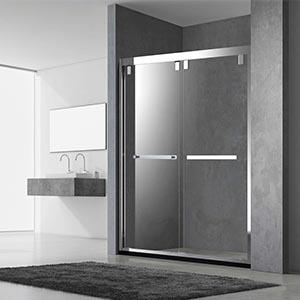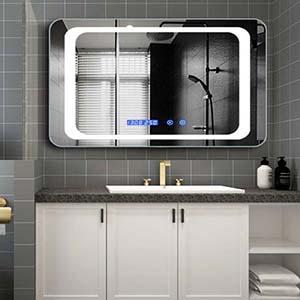Description
High quality cheap price 3 4 5 6mm silver Mirror factory

Why choose us:
1. Can accept small quantity order
2. Accept customized
3. Carton packaging (Both project and supermarket)
The History of Mirror Making
Mirrors have been an integral part of human civilization for millennia, serving as tools for reflection, self-perception, and artistic expression. The history of mirror making spans thousands of years, from the early use of natural materials to the sophisticated manufacturing techniques employed today.
1. Early Beginnings
The origins of mirror making can be traced back to ancient civilizations such as Mesopotamia, Egypt, and China, where primitive mirrors were crafted from polished stones, metals, and obsidian. These early mirrors, though rudimentary, provided individuals with the ability to see their own reflections and were often regarded as symbols of beauty and vanity [2].
2. Advancements in Ancient Times
As civilizations progressed, mirror making techniques evolved. In ancient Egypt, polished copper and bronze were used to create mirrors, while in ancient China, mirrors were made from polished bronze and later from mercury-coated bronze mirrors. The Romans further refined mirror making by introducing glass-blown mirrors with reflective backing made from metals like tin and silver [5].
3. Medieval Innovations
During the Middle Ages, mirror making experienced significant advancements in Europe. Craftsmen in Venice, Italy, pioneered the production of high-quality glass mirrors by coating glass sheets with a mixture of tin and mercury, creating highly reflective surfaces. These Venetian mirrors became highly sought after and were prized possessions among royalty and the elite [6].
4. Industrial Revolution and Modernization
The Industrial Revolution marked a turning point in mirror making, with the introduction of mass production techniques and innovations in materials. In the 19th century, advancements in chemistry led to the development of silvered glass mirrors, which replaced the hazardous mercury-backed mirrors. These silvered glass mirrors revolutionized the industry, offering safer and more affordable alternatives [5].
5. Contemporary Mirror Making
In the modern era, mirror making has become highly specialized and technologically advanced. Manufacturers utilize cutting-edge techniques such as vacuum deposition and chemical vapor deposition to create mirrors with precise coatings and exceptional optical properties. Additionally, the use of innovative materials like acrylic and polycarbonate has expanded the versatility and applications of mirrors in various industries [4].
6. Cultural Significance
Throughout history, mirrors have held cultural significance and symbolism in various societies. They have been associated with beauty, self-reflection, and spirituality, and have featured prominently in art, literature, and folklore. From the myth of Narcissus to the iconic "Mirror, mirror on the wall" from Snow White, mirrors continue to captivate and intrigue humanity [6].
7. Environmental and Ethical Considerations
In recent years, there has been a growing emphasis on sustainable and ethical practices in mirror making. Manufacturers are increasingly focused on reducing environmental impact by utilizing eco-friendly materials, optimizing production processes, and implementing responsible waste management strategies. Additionally, there is a growing awareness of the ethical implications of mirror making, particularly regarding labor practices and social responsibility [3].
In conclusion, the history of mirror making is a testament to human ingenuity and creativity. From humble beginnings to modern innovations, mirrors have evolved into indispensable tools that shape how we perceive ourselves and the world around us.
Mirrors have been an essential part of human history, serving as tools for reflection, self-perception, and even spiritual rituals. The journey of mirror making spans millennia, from the early use of polished surfaces to the sophisticated techniques employed today. Let's explore the fascinating history of mirror making and its evolution through the ages.
1. Ancient Origins
The origins of mirror making can be traced back to ancient civilizations such as Mesopotamia, Egypt, and China. Early mirrors were crafted from naturally occurring materials like polished stones, metals, and obsidian. These primitive mirrors provided individuals with the ability to see their own reflections, albeit with limited clarity [2].
2. Advancements in Antiquity
As civilizations progressed, mirror making techniques evolved. In ancient Egypt, polished copper and bronze were used to create mirrors, while in ancient China, mirrors were made from polished bronze and later from mercury-coated bronze. The Greeks and Romans further refined mirror making by introducing glass-blown mirrors with reflective backing made from metals like tin and silver [5].
3. Medieval Innovations
During the Middle Ages, mirror making experienced significant advancements in Europe. Craftsmen in Venice, Italy, pioneered the production of high-quality glass mirrors by coating glass sheets with a mixture of tin and mercury. These Venetian mirrors became highly sought after and were prized possessions among royalty and the elite. The craftsmanship of these mirrors became renowned throughout Europe [6].
4. Industrial Revolution and Modernization
The Industrial Revolution marked a turning point in mirror making, with the introduction of mass production techniques and innovations in materials. In the 19th century, advancements in chemistry led to the development of silvered glass mirrors, which replaced the hazardous mercury-backed mirrors. These silvered glass mirrors revolutionized the industry, offering safer and more affordable alternatives. Additionally, the invention of the silvered–glass mirror led to further advancements in mirror production, such as the use of mercury in the 1800s [4].
5. Contemporary Mirror Making
In the modern era, mirror making has become highly specialized and technologically advanced. Manufacturers utilize cutting-edge techniques such as vacuum deposition and chemical vapor deposition to create mirrors with precise coatings and exceptional optical properties. Additionally, the use of innovative materials like acrylic and polycarbonate has expanded the versatility and applications of mirrors in various industries [3].
6. Cultural Significance
Throughout history, mirrors have held cultural significance and symbolism in various societies. They have been associated with beauty, self-reflection, and spirituality, and have featured prominently in art, literature, and folklore. From the myth of Narcissus to the iconic "Mirror, mirror on the wall" from Snow White, mirrors continue to captivate and intrigue humanity.
In conclusion, the history of mirror making is a testament to human ingenuity and creativity. From humble beginnings to modern innovations, mirrors have evolved into indispensable tools that shape how we perceive ourselves and the world around us.
1. Production process
Cutting-edging-rounded corners-water jet-punching-silk screen-tempering-self-cleaning liquid / safety explosion-proof film-packaging
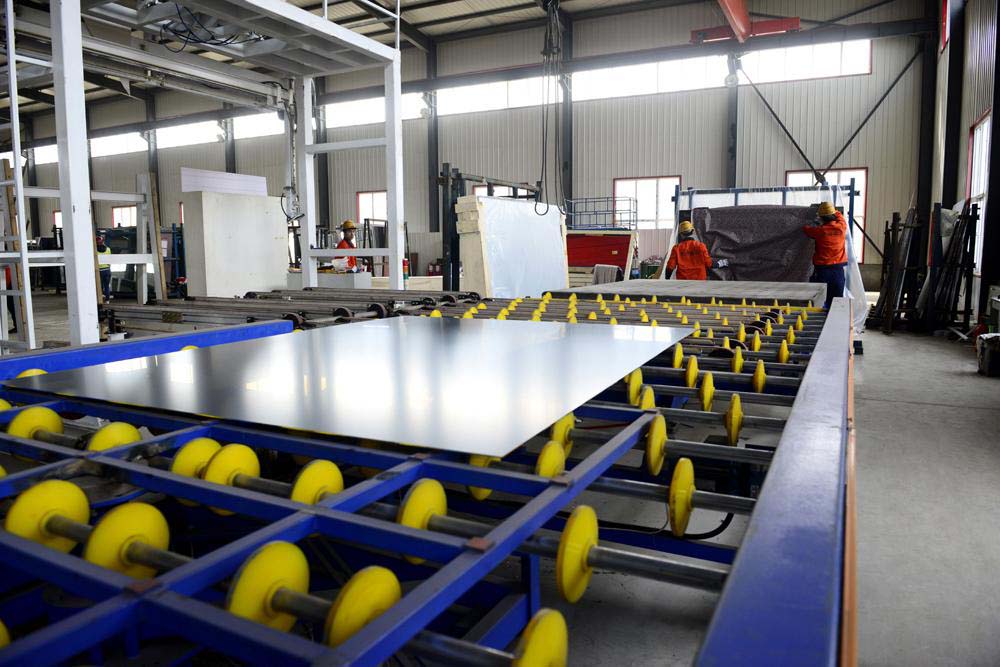

2. Quality Control
2.1 Each glass must be inspected to confirm before entering the factory;

2.2 Quality control in the production process are in accordance with quality control standards.
First inspection-self-inspection-special inspection-factory inspection, product standards are strictly implemented in accordance with customer technical documents or industry standards;
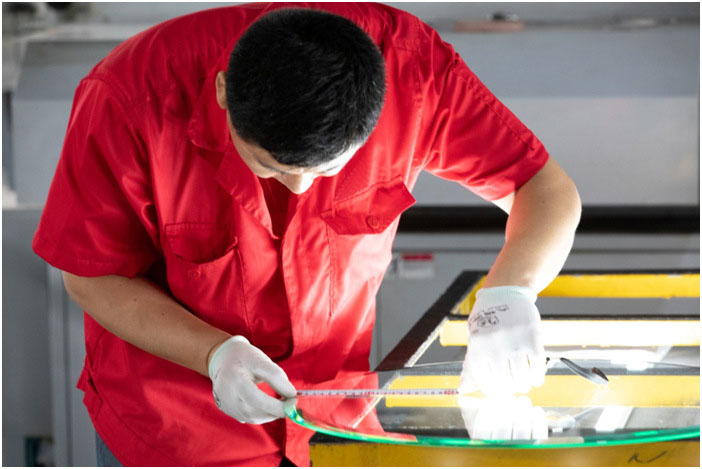
2.3 The dimensional accuracy and tempering quality inspection data of processed products shall be recorded and archived with traceability;
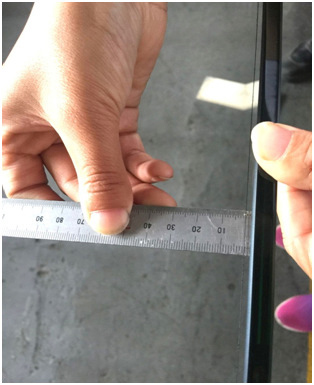
2.4 The bending degree of toughened grain is tested, the bending degree is 1.5‰, and the grain size is 55-80 grains per 50*50mm
3. The company's certification qualifications
The company's products have passed European CE certification and American SGCC certification
4. 10years of export packaging experience: Carton foam packaging and fumigation-free wooden box packaging can be realized to ensure product transportation safety;
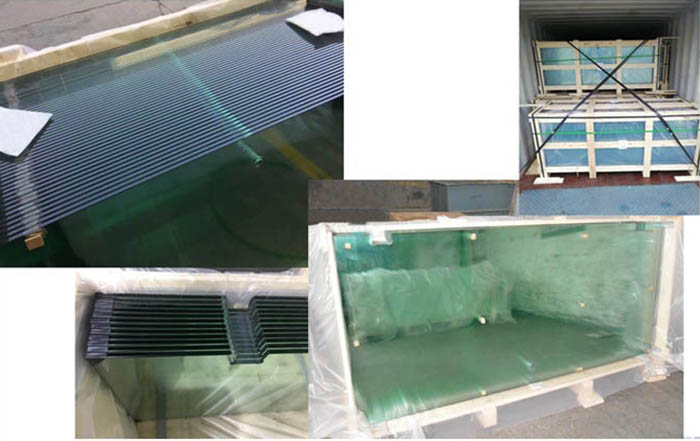
5. The company's equipment processing capacity
Focus on the manufacture of tempered glass for home appliances for 14 years. The company has comprehensive equipment capabilities for processing high-temperature silk screens, including Italian Bottero cutting machines, Bottero edging machines, CNC machining centers, automatic punching machines, automatic rounding machines, automatic screen printing machines, tempering furnaces and other equipment.
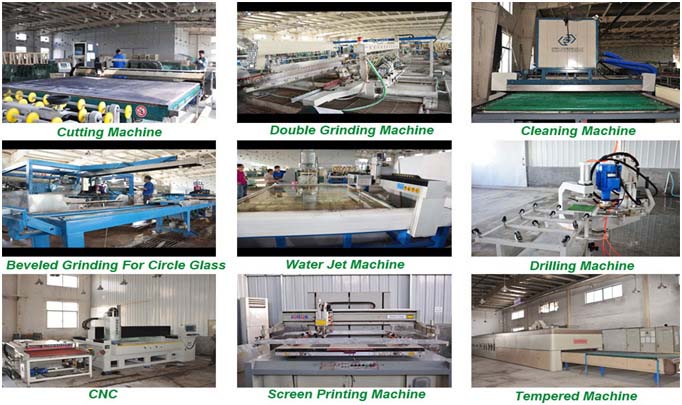
-Choose Taiwan Glass or Jinjing Automotive Grade Original Float glass
-Polished straight edges, size tolerance ±1mm, uniform edge 1mm
-Safety corner or round corner treatment
-Water jet cutting, accurate size, vertical water jet with safety angle,
-Even tempered grain
-Fumigation-free wooden box packaging, firm and safe
-Can provide carton foam sales packaging
-Self-cleaning nano coating can be applied
-Safety explosion-proof film can be attached
 English
English Russian
Russian

